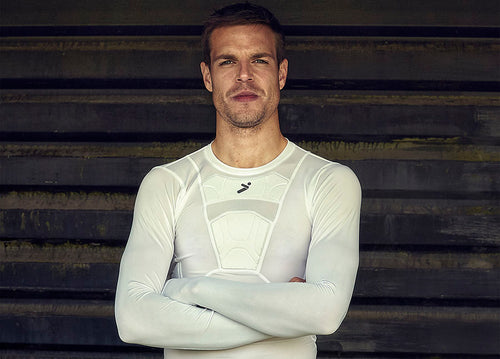Les protège-tibias sont ton meilleur ami sur le terrain de soccer. Bien sûr, ils sont obligatoires, mais ils font bien plus que satisfaire les arbitres : ils te protègent de tout le chaos qui se produit dans le feu de l'action. Mais de quoi vous protègent-ils exactement ? Voyons cela de plus près.
Ce que les protège-tibias protègent réellement
Les protège-tibias vous protègent contre toute une série de blessures, des contusions aux fractures. Les contusions (en gros, les bleus profonds) et les coupures sont les plus courantes. Lorsque vous recevez un coup sur le tibia, vos protège-tibias encaissent le gros de la force, ce qui permet à votre peau et à vos os de rester intacts. Et dans le pire des cas ? Les protège-tibias aident à prévenir les fractures du tibia, une blessure qui peut vous mettre sur la touche pendant des mois.

Source de l'image : OrthoCarolina
Mais ne nous croyez pas sur parole : les recherches montrent que les protège-tibias réduisent la force des impacts de 41 % à 77 % dans la plupart des cas. dans la plupart des cas. C'est énorme ! Sans cette couche de protection, chaque tacle glissé, chaque coup de pied ou chaque botte égarée mettrait vos jambes en danger.
Les os attaqués : Tibia et péroné
Le principal os que vous protégez est le tibia, qui se trouve au centre de la jambe. Il est plus vulnérable que les autres os de la jambe car il n'y a pas beaucoup de muscles qui le protègent des impacts. Les protège-tibias couvrent cette cible privilégiée. Certains modèles offrent même une protection limitée pour le péroné, le plus petit os situé à l'extérieur de la jambe. Mais c'est le tibia qui est le véritable MVP ici, et vos protège-tibias agissent comme un bouclier pour lui.
Tous les protège-tibias sont-ils identiques ?
Tous les protège-tibias ne sont pas identiques. Certains matériaux, comme la fibre de carbone, peuvent offrir une meilleure protection que les protège-tibias en plastique de base, c'est-à-dire les protège-tibias en plastique de moins bonne qualité.
Cela dit, les protège-tibias en fibre de carbone ne sont pas votre seule option. Notre gamme de protège-tibias protège-tibias ExoShield sont constitués d'une coque en polyéthylène et moulés avec de la mousse EVA. Ils sont légers, mais contiennent une résine très résistante qui réduit les impacts de force élevée susceptibles de fracturer et de briser les os.
En fin de compte, elles combinent un design peu encombrant qui ne gêne pas, avec une protection robuste contre les blessures. Leur conception cunéiforme leur permet de s'adapter et de se verrouiller dans nos protège-jambesCes derniers sont dotés d'une technologie de résistance aux chocs qui réduit encore les forces traumatiques de 90 %.
Fonctionnement des protège-tibias
Les protège-tibias ne se contentent pas de rester assis, ils ont un rôle à jouer. Tout d'abord, ils absorbent les chocs en prenant le coup et en dispersant l'énergie sur une zone plus large. Ils évitent ainsi que toute cette force n'aille directement dans votre jambe. Ensuite, ils répartissent l'impact sur une période plus longue, réduisant ainsi la force maximale qui pourrait entraîner une blessure grave. Enfin, la coque extérieure résistante des protège-tibias agit comme une armure, déviant les coups directs et protégeant les os et les tissus mous.
Conclusion ? Ne faites pas l'impasse sur les protège-tibias. Ils ne sont pas là pour faire joli, ils constituent la première ligne de défense contre des blessures assez graves sur le terrain.
Vous recherchez des protège-tibias confortables et de haute qualité ? Découvrez nos nouveaux protège-tibias à enfiler pour trouver votre chaussure idéale !
























